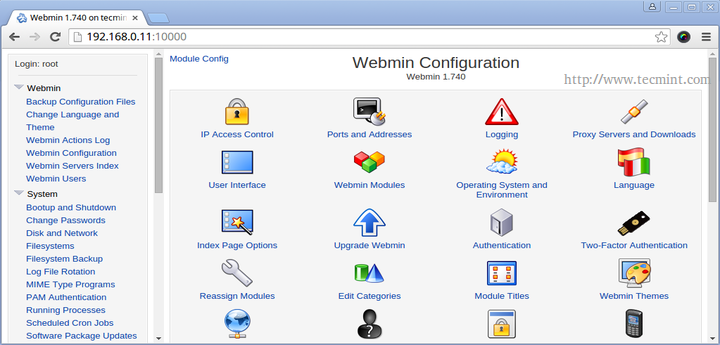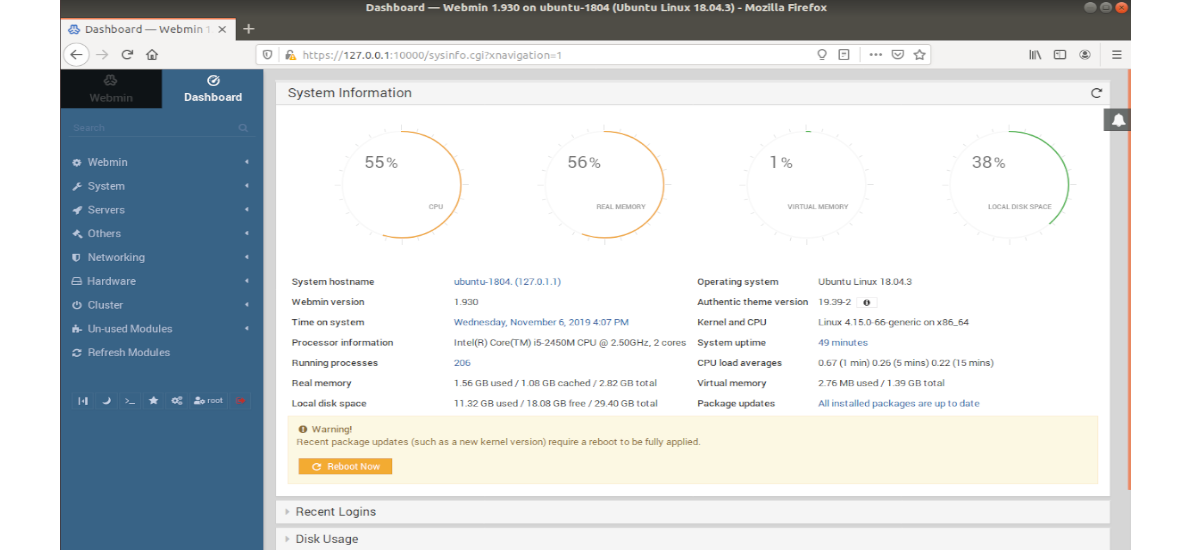

I have heard of IPtables but for some reason I cannot implement that solution. I have read many forum posts of users having similar problems but none of the solutions have been effective. The only "error" that appeared was something about not being able to do something with IPv6, Opening webmin config and changing the port/listen line to listen to another port such as 44321, Allowing ports 10000 ,HTTPS port (443 I think), port 22, port22 v6 I have tried the following to solve my problem: I "sucessfully" completed the installation(s) via terminal and it directed me to goto and to log in with root.Īfter multiple attempts, even tried using I am greeted with "Safari cannot open MY_IPADDRESS because it cant connect to the server". I have now installed webmin(using apt-get) and also tried following the instructions from on a different occasion. PHP and Apache are both installed correctly since I get their landing pages. There is nothing else worth mentioning for this Debian / Webmin combination.Recently set up a Debian 9.1 圆4 server with SSH and LAMP stack (PHP ver7.0). Of course, security measures implemented on the VPS slice itself shall never be documented online - the less the attackers know the better. Your security options available by the VPS Provider (which is Linode) is detailed here. To add the configurations for a Tier-1 is documented here, and for a Tier-2 is documented here. For the Debian 9 with Webmin 1.9xx the defaults are documented here. In the case when you do, and in the future when Debian 10 and Webmin 2.0 becomes relevant please document those configurations below, under a new section.
#Webmin org update#
Please send a message to the list, or better yet update this wiki with a better solution. Directory traversal vulnerability in Webmin before 1.280, when run on Windows, allows remote attackers to read arbitrary files via (backslash) characters in. Since Webmin fully supports firewalld, and while uwf still needs to be managed from the root shell, this makes sense.

With Debian 9 I made the choice to use firewalld - which is only my personal preference, as the default Debian 9 firewall is ufw.
#Webmin org software#
One reason to use Webmin is to stay consistent with the default GNU software for the Debian distribution. I would recommend to continue all other installation and configuration from Webmin, for several reasons. Access your instance from the browser, by the IP4 address, at the default port 10000.

This is a good time to take your first snapshot. Once Webmin is installed and runing, you can access Webmin via the IP or web address you supplied or were given by the system. If you decide to do so, here is a quick way to do it - but this is not yet tested and verified to be working.įirewall-cmd -add-service=https -permanentįirewall-cmd -add-port=22/tcp -permanentįirewall-cmd -add-port=10000-10100/tcp -permanentįirewall-cmd -add-port=53/tcp -permanentįirewall-cmd -add-port=53/udp -permanentįirewall-cmd -add-service=dns -permanentĮcho 'deb sarge contrib' | sudo tee -a /etc/apt//sources.list Setting up a firewall at this point is optional, it might be a better idea to delay this.
#Webmin org install#
This is not a tutorial on mitigating attacks against your instance, and secure configuration is not going to alter the requirements: you may later replace the root login with another, configure ssh keys, install a different firewall, change default ports, filter for login source IP, limit the number of attempts, etc… Here we create a functional node and leave the rest to a different section on this wiki.Īpt-get -y install nano apt-transport-https tzdata dnsutils Review the values in the “Notification Thresholds” to be alerted during attacks.


 0 kommentar(er)
0 kommentar(er)
